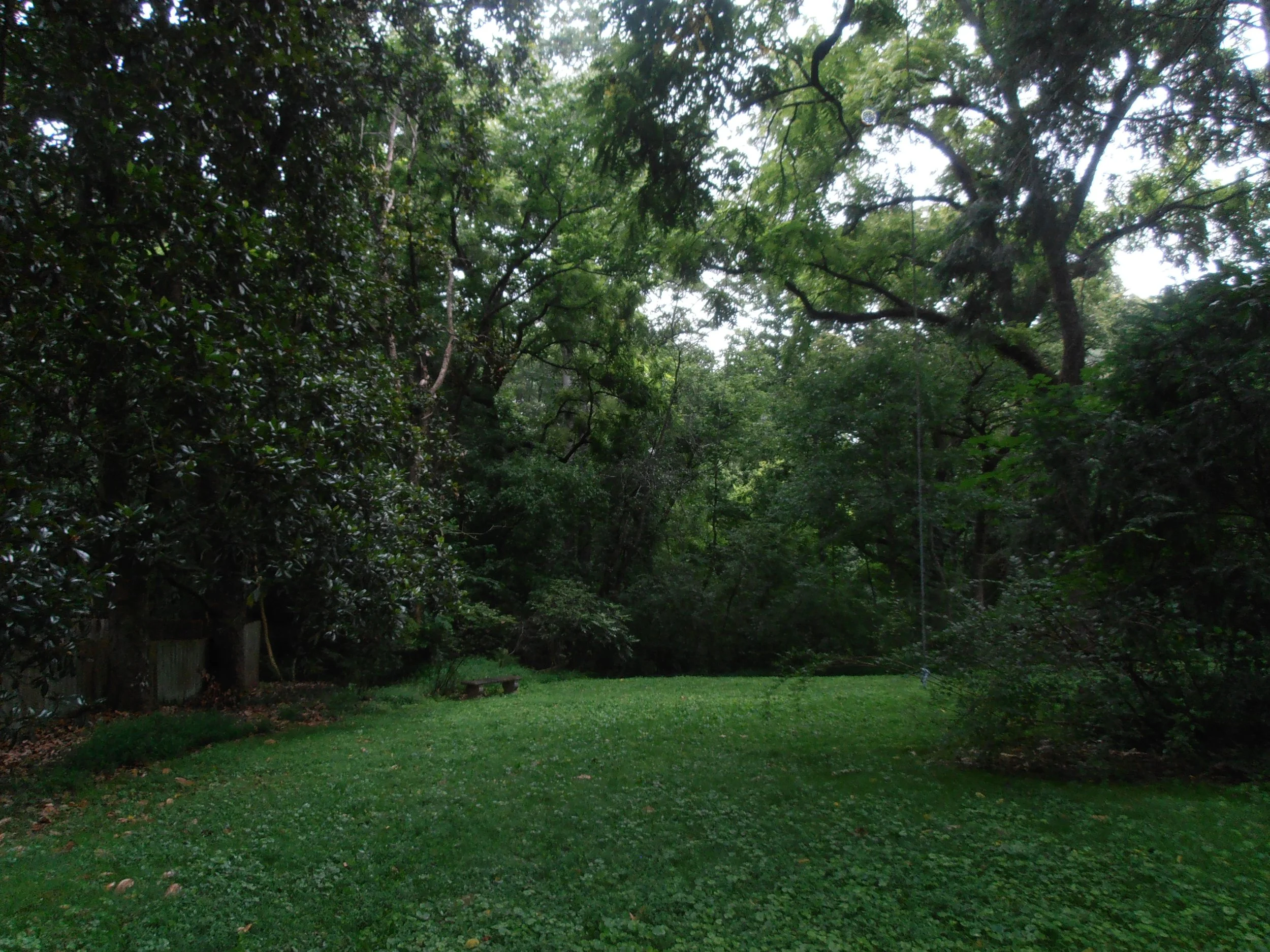
This area of the property has perhaps seen the most transformation over the years. West of the reflecting pool garden, Neel Reid created two sunken gardens, one of which was a rose garden. Both of those gardens were removed in the 1940s by property owner Gus Tolson. He replaced one with a swimming pool and the other with a lawn that he sometimes used as a tennis court. The City of Roswell removed the swimming pool for safety reasons.
Granger Hansell named this garden room for the weeping willow that had been planted there. The garden no longer contains the weeping willows and weeping cherry trees that the Hansell family planted there over the years. As surrounding trees grew in the late 1900s, the willows and cherry trees stopped getting enough sunlight to thrive. The enormous black walnut tree dates to the 1840s or possibly earlier and is remarkable for its size and its age.
This garden may have been the location of the 4 slave dwellings that housed approximately 30 enslaved persons before the Civil War. The slave quarters were probably destroyed during the war, when the Union army occupied the property. Archaeological work and research are ongoing by both the City of Roswell and Friends of Mimosa to find out more about the dozens of enslaved people who lived here, but records suggest that some of them came with the Dunwody family from Savannah when Mimosa Hall was built. Before he moved to Roswell, John Dunwody owned a plantation where he enslaved more than 100 people. Although he sold the plantation in the early 1840s, he may have forced some of the enslaved families to move with him to Roswell.




